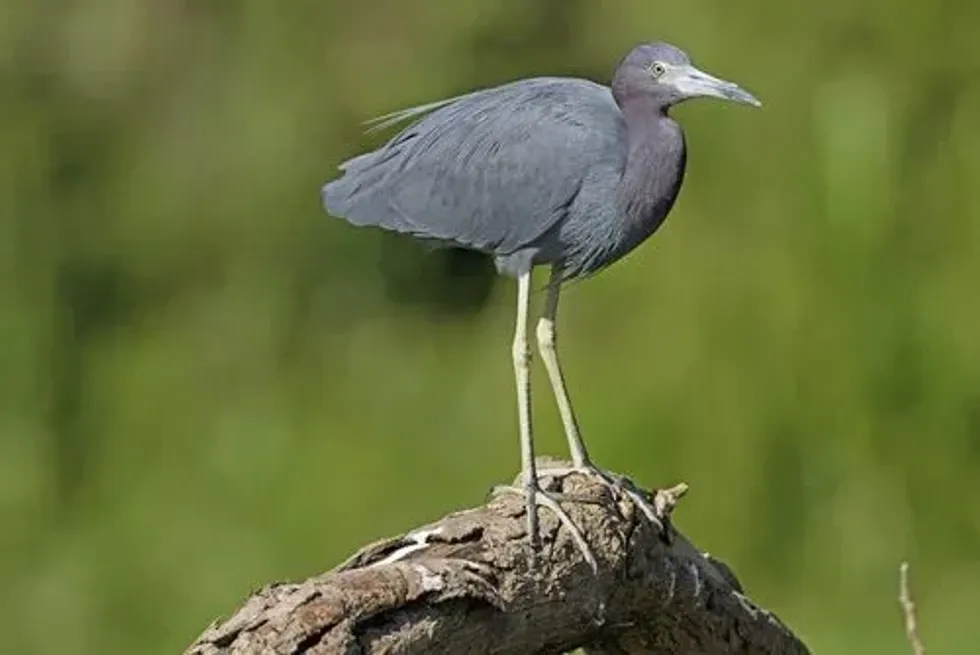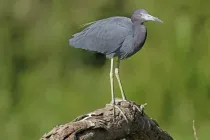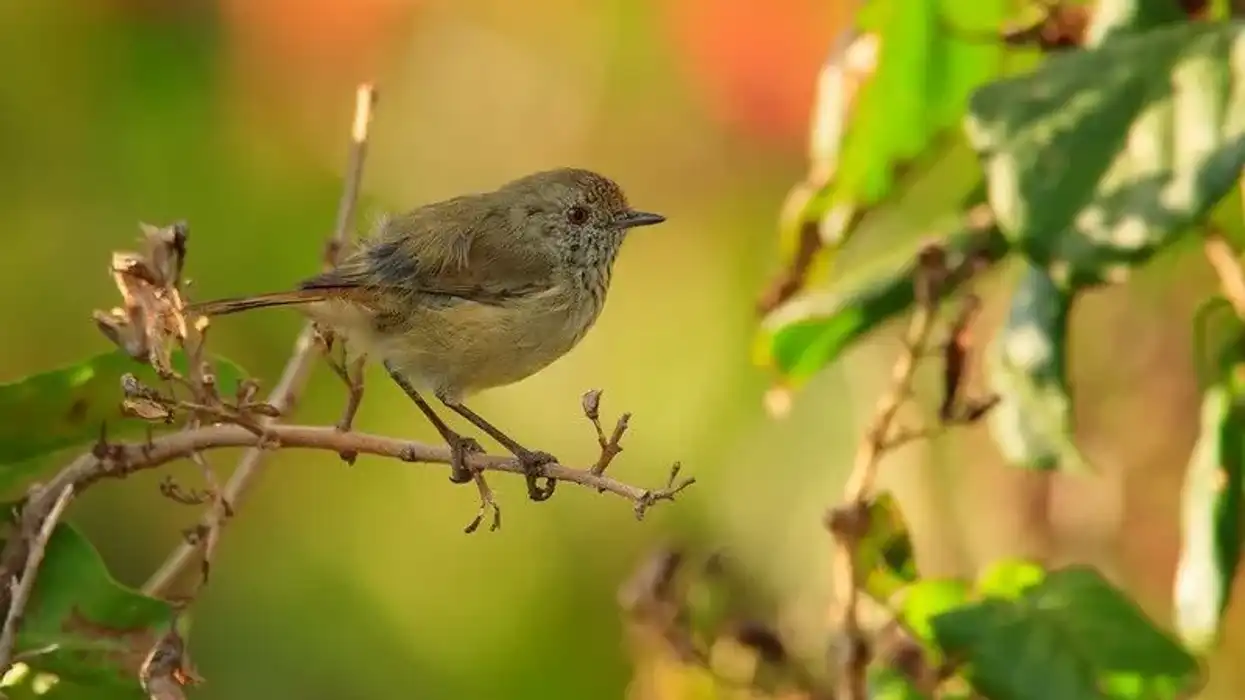A sky full of those colorful birds, who doesn't love that. And for those birdwatchers, it's a buffet; there is nothing more they crave. If you see a bird in this fleet of birds that has extravagant colors and is a rare species, wouldn't you be shocked?
The Little Blue Heron (Egretta caerulea) is a rare migratory bird that visits Central America from Southeast America. It enlightens those dull marshes and estuaries that they reside in. They stalk these waters for fish and amphibians.
There are species of this bird that don't interact with humans and stay isolated, but some do. These are migratory birds that breed in the interior Southeast and migrate to Central to Central and South America and the Caribbean.
Several tribes in North America consider Blue Heron as a symbol of patience and good luck. Threats to Herons may include coastal development, disturbance at foraging and breeding sites, degradation in feeding habitats and reduced availability of prey.
After you read these facts about these birds of North America, you may also look at great green macaw facts and barn owl facts.
Little Blue Heron Interesting Facts
What type of animal is a Little Blue Heron?
Little Blue Heron (Egretta caerulea) is small-sized with a slender neck and body, but it has long legs. It has a long pointed pale blue or grayish bill with a darker or black tip.
Although it is almost the same size as an Egret, its body is more elongated than a Snowy Egret. Young birds are whitish in the first year, except for dark wings and dull green legs.
The species is similar to the much larger and bigger billed Reddish Egret. And immature little blues are lookalikes of snowy blues.
What class of animal does a Little Blue Heron belong to?
Little Blue Heron belongs to class Aves, order Pelecaniformes, family Bitterns. The members of this class are said to have hollow bones. Little Blue Heron is the same size as a Snowy Egret.
How many Little Blue Herons are there in the world?
The population of Little Blue Herons is decreasing every year but still the overall population is relatively steady as their conservation status is of Least Concern at present.
Where does a Little Blue Heron live?
Little Blue Herons live in freshwater ponds, swamps, coastal thickets, and islands. These birds of North America are migratory birds that come from Southeast America. If you wish to see a Little Blue Heron in its natural habitat, then you must get hold of a field guide or a bird guide as soon as possible.
What is a Little Blue Heron's habitat?
The Little Blue Heron is a resident of marshes and estuaries of Southeast America. Little Blues are also found near ponds, lakes, and streams. These North American birds are migratory birds that visit South America and Central America. The Little Blue Heron Florida habitat includes swamps, estuaries, ponds, lakes, and rivers.
Who do Little Blue Herons live with?
Little Blue Herons are sociable birds that live with other Herons. These birds of North America nest in groups along the edges of other Heron nests. This species nests in shrubs and small trees, or they can best reside in flooded areas as an added advantage against their enemy.
How long does a Little Blue Heron live?
A Little Blue Heron lives for approximately seven years. This species often follow farmers in forests to gather insects that are plowed during the farming season.
How do they reproduce?
The breeding season for the Little Blue Heron is in the months of March and April. Males and females attain sexual maturity at the age of 1 year.
After the breeding process is completed, females lay around 4-5 eggs over a period of around eight days as they lay their eggs, one after the other. The nest is constructed on a platform of sticks in trees or shrubs.
Both the parents stay together till the eggs hatch in 22-24 days and all the eggs hatch in a period of around five days during the breeding season.
Both the parents feed the immature Little Blue Heron chicks till they are ready to leave the nest after around three weeks of being born. After a period of around 7 weeks after being born, the juvenile Little Blue Heron leaves the nest and is on its own.
What is their conservation status?
Little Blue Heron conservation status at present is of least concern but their population is decreasing gradually, therefore concerted conservation efforts are highly desirable. Conservation of their habitat will go a long way in sustaining the population of these birds.
Little Blue Heron Fun Facts
What do Little Blue Herons look like?
Little Blue Herons commonly stand with their neck bent in an S shape. They fly with legs trailing loosely and head back against the body.
Blue Herons are dark all over, and at close range or in bright light, they have a rich purple, blue head and neck with a blue green body. It has yellow eyes and greenish legs, a bill that is pale blue at the base, back and tip.
Juvenile Blue Herons look like rich purple, maroon head and neck, and slaty blue green body.
How cute are they?
Birds of this species are very cute with vibrant colors, and small figures make them look even better. Blue Herons are quite alluring when they catch their prey in their mouth. Little Blue Heron in flight is an absolute spectacle to behold.
How do they communicate?
Blue Herons clack their bills when this species communicate with each other. The Little Blue Heron call can be loud, forceful, aggressive snapping or a gentle given between members of the pair.
How big is a Little Blue Heron?
The Little Blue Heron range of size is 25-30 in with a wingspan of around 40 in. This species is larger than Herons and are just like snowy egrets in appearance. When you compare Little Blue Heron vs Great Blue Heron in terms of size, the Little Blue Heron resembles snowy egrets more, despite having a different name.
How fast can a Little Blue Heron fly?
Blue Herons are incredible fliers. This species can fly at speeds of 20 miles per hour. During flight, the neck is curled in an S shape. Their legs can be seen dangling behind the body. Herons are always active both during the day and night.
How much does a Little Blue Heron weigh?
Adult Little Blue Herons weigh around 0.75 lb. Juvenile Blue Herons are small and white in color, with blue color only on the tips of wings and toes.
What are their male and female names of the species?
There is no specific name for the male and female birds of this species. They are known as a male Little Blue Heron and a female Little Blue Heron. They are usually differentiated by the color of their skin and size.
What would you call a baby Little Blue Heron?
Their baby is called branchers. Both the parents help in the incubation of eggs and also feed the babies together till it becomes an adult. Little Blue Heron immature juveniles resemble snowy egrets in appearance.
What do they eat?
They are carnivorous creatures who eat their food with help of their bill. They eat a diet comprising of fishes, frogs, amphibians, and even insects as their food. They look for any animal visible in their sight and eat it.
Are they dangerous?
These nesting birds have strong beaks and can harm anyone with them. Blue Herons are easily stressed out and get dangerous.
Would they make a good pet?
Yes, they make good pets if they are fed and trained properly. It is important to get them trained, or they will have mood swings.
Did you know...
Little Blue Heron is not an energetic bird. These nesting birds sometimes walk fast and run, but most of the time, they just scroll slowly and daintily around the marshes.
Although while hunting, it is a solitary bird, but it nests in groups. This bird is a day feeder when it dives its legs deep in water and finds the prey slowly.
When you compare reddish egret vs Little Blue Heron in terms of appearance, the egrets are much larger in size with a considerable mane.
How long does it take a Little Blue Heron to turn blue?
Little Blue Heron is white during the first year of their birth, and later on, they turn blue. Young Herons are often confused with snow egrets due to their color.
What does seeing a Blue Heron symbolize?
According to North American tradition, seeing a Blue Heron brings hope, self-determination, and self-reliance. Herons represent the ability to progress and evolve. Another one of the North Beliefs says that long thin legs of Blue Heron signifies that people don't need massive pillars to remain stable.
Here at Kidadl, we have carefully created lots of interesting family-friendly animal facts for everyone to discover! Learn more about some other birds including secretary bird, or tawny owl.
You can even occupy yourself at home by drawing one on our Blue Heron coloring pages.










